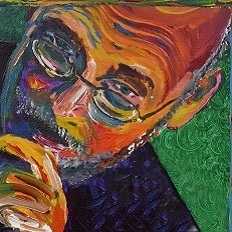Where's my patient?
Real-time location services are gaining traction as a tool for finding equipment and patients in the hospital.
Dr. Johnson had a full service of inpatients. At 9:30 a.m. she went to see Mrs. Simpson. Not finding the patient in her room, Dr. Johnson asked the nurse, who said she was down in the dialysis unit.

In hospital care, efficiency is an essential goal. Real-time location services (RTLS) is a tool to monitor the location of objects and people and improve efficiency, using technologies such as radiofrequency or Bluetooth. The infrastructure to enable this technology consists of transmitters stationed throughout a hospital and devices attached to each person or piece of equipment. Users are then able to see the real-time location of the objects and individuals.
RTLS was first adopted in the industrial and retail sectors to track assets through production lines, maintain inventory within warehouses, and optimize supply-chain processes. However, RTLS is now gaining traction in health care.
Dr. Johnson saw her other patients, then headed three flights down and across the hospital to the dialysis unit. When she got there, she learned Mrs. Simpson was back in her room.
The low-hanging fruit for RTLS in health care is tracking equipment. Equipment is frequently misplaced or lost, decreasing efficiency and increasing costs. With RTLS, these losses can be reduced, as devices can be more easily recovered. Care teams and environmental and general services can use RTLS to quickly find everything from IV pumps to wheelchairs, even identifying the device nearest to them.
Dr. Johnson returned to the ward to see Mrs. Simpson, but now the nurse reported she was down in radiology.
A natural next step in hospitals' use of RTLS is tracking patients. Knowing where patients are and where they've been is valuable to clinicians, whether for contact tracing, mapping the patients' journeys, or finding lost patients who have wandered or eloped. Patients could also use the technology for wayfinding if it's incorporated into an app mapping the hospital, potentially increasing their satisfaction.
Dr. Johnson started down to radiology, but on the way, she stopped for a cup of coffee.
RTLS can also be used in the hospital for security. For example, if a clinician needs to make a distress call, help can be directed to the exact location. RTLS technology can also be used to track whether staff are using hand hygiene stations to reduce hospital-acquired infections.
Dr. Johnson took her coffee into the courtyard for a moment of relaxation and spotted Mrs. Simpson sitting with her family, enjoying a bit of sun. They agreed to meet in her hospital room in 30 minutes.
RTLS technology presents both potential benefits and challenges to health care organizations. It has been shown to reduce patient wait times, lower hospital-acquired infections, increase bed capacity, and enhance patient satisfaction, among other benefits. Conversely, it can raise concerns among hospital staff about the tracking of their locations and behavior. Other challenges include IT infrastructure coordination, data connection and streamlining, and cost.
RTLS capabilities will grow in health care as the technology becomes more precise and efficient. Maximizing its benefits will entail educating and working with hospital staff to identify the problems that RTLS can help solve.
Dr. Johnson saw Mrs. Simpson and finished her work. As she left the hospital after her shift, she reflected on how much time she had wasted and how frustrating it had been chasing her patients around the building. But at least she got her steps in for the day!



